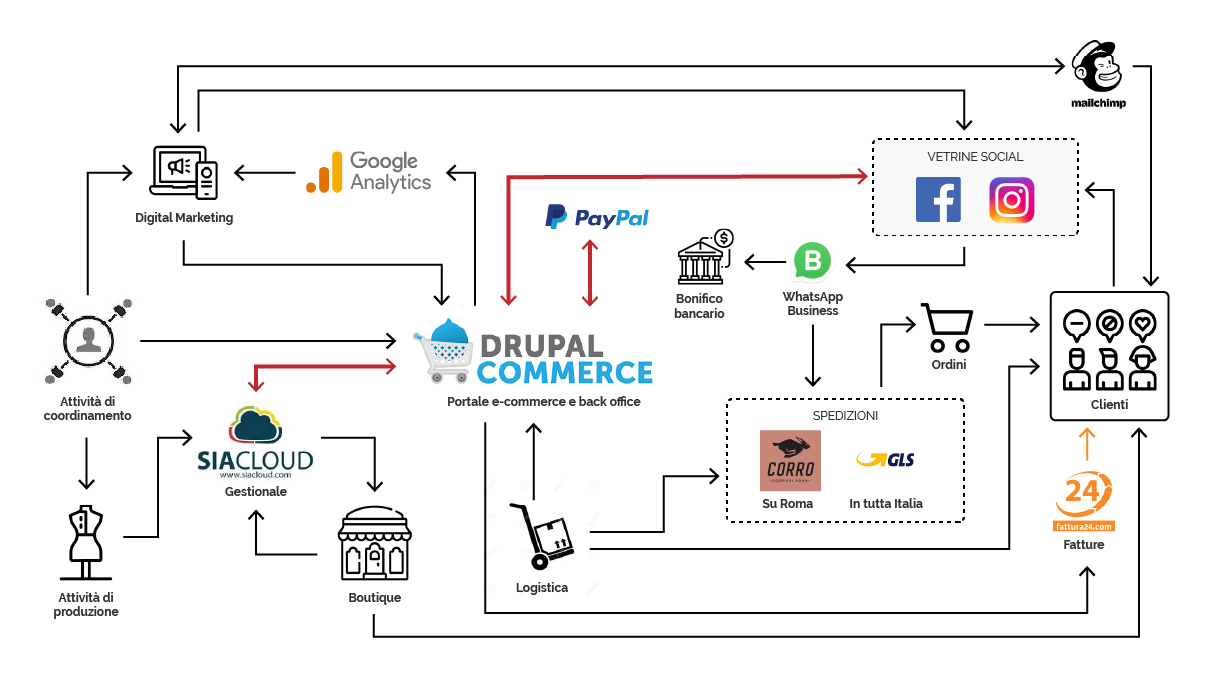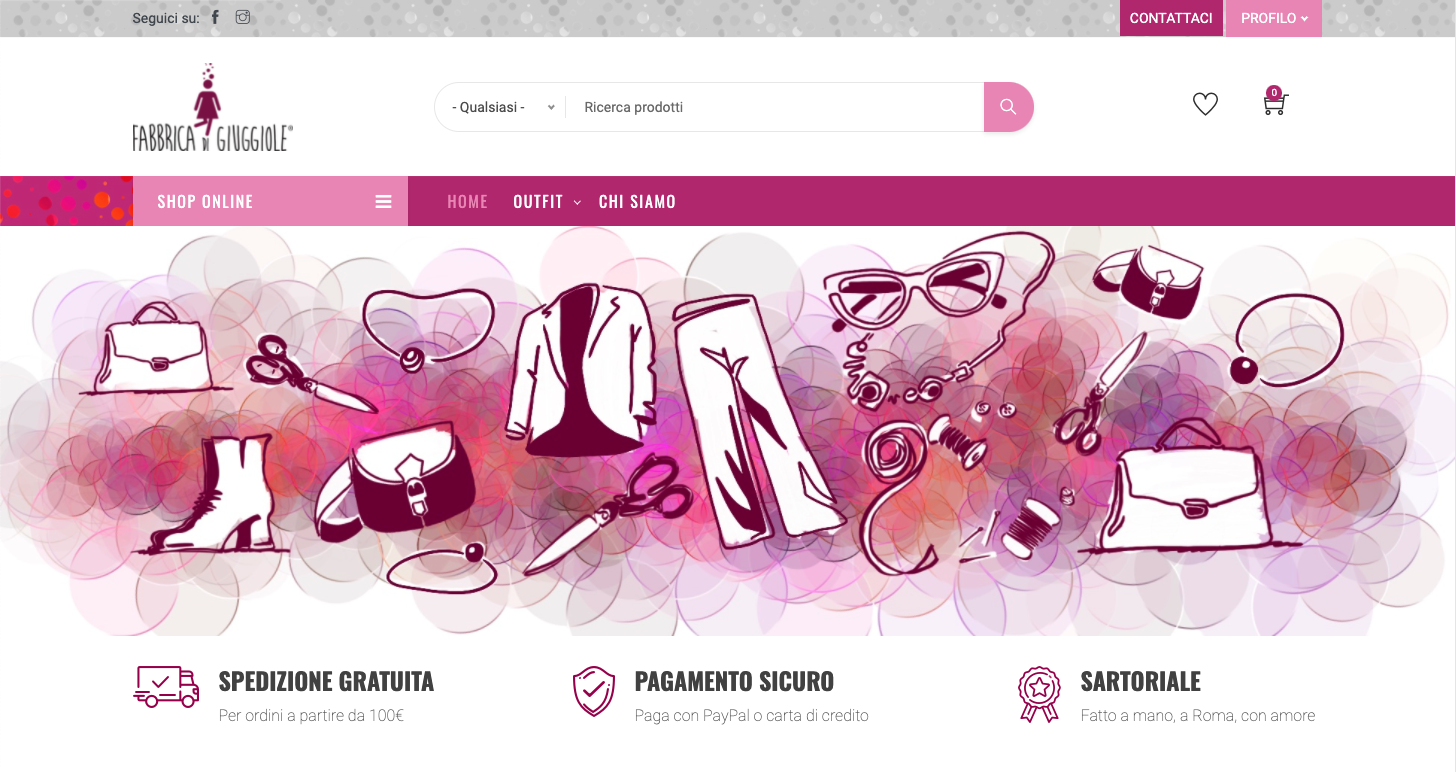If in your life you have thought at least once about starting to sell online, then you have surely heard of ecommerce ecosystems.
An ecommerce ecosystem is an integrated group of services, internal or external to the seller, which collaborate in synergy to provide a shopping experience to a target of consumers.
The services that come into play are many and of different nature. Some may be digital, others offline, but without claiming to be exhaustive we can list:
- one or more showcase platforms that show the products / services
- the platform that manages and processes the payment
- the accounting system that deals with the issue and subsequent filing of payment invoices
- logistics system that takes care of starting the shipment of the product to the destination
- management system that takes care of keeping the inventory of goods up-to-date and that communicates with the shop windows
- analytics platform that tracks purchasing behavior and summarizes consumption trends
- platform for pre and post sales communication with the customer
- in the case of an artisanal product, the system that organizes and manages the different aspects of production
These systems work synergistically to deliver the speed and user experience that customers have come to expect now in this digital age.
Sustainability and scalability
Just look at Amazon's large-scale success to see that while it may seem complicated, combining these platforms to deliver nearly seamless orders and deliveries is possible. Not only that, it is also the key to having a sustainable and easily scalable business.
For example, suppose that even one of these systems has a hitch. In this case, its negative impact is immediately felt by the consumer and ends up having a more or less serious impact on the global perception of the brand. The goal that needs to be set is as simple as it is difficult to achieve: everything must work smoothly from the moment a user encounters the product / service for the first time, until the final payment is received and the order is verified, shipped and delivered to the customer in excellent condition.
Dependence on external factors
The ambitious goal of making all systems work together smoothly is even more difficult when you think about the level of outsourcing that e-merchants resort to in the implementation of their sales activity: today there is a service for practically every aspect of the business. ecommerce: payment management, customer communications, newsletters, shipping, analytics, showcase etc. Just think of the size just mentioned to understand how difficult it is to give some kind of guarantee to the final consumer when there are so many variables that are not controlled.
The ecosystem behind an ecommerce platform is roughly the same for most online stores. So let's take a look at the ways and means to make sure the latter works well.
Draw a map of the functioning of your ecosystem
While it may seem superfluous, drawing the flows of how your business works is an activity of fundamental importance. Primarily because you understand how your platform works. Second, because it never hurts to draw up a flowchart, and thirdly, it allows you to step into your ideal consumer shoes.
The more processes that are drawn and included in the map, the clearer the idea we will have of what makes our process distinctive and what makes the shopping experience go smoothly for our consumers.
The protagonist of the ecosystem: the ecommerce platform. The case study Fabbrica di Giuggiole
Looking at the work done for one of our customers, Fabbrica di Giuggiole, we see that the center of the entire ecosystem is carried out by the ecommerce platform, in this case a bodywork solution with Drupal Commerce. The platform works as a real hub where other services converge, some internal and proprietary of our client. Others totally external.

For Fabbrica di Giuggiole our agency encountered quite a few challenges, and was good at coordinating and bringing together different aspects of agency work, putting them at the service of FDG:
- graphic customization capability of the Drupal open source solution
- writing and development of specific modules
- integration of the platform with the APIs of various external services (mailchimp, facebook, instagram, whatsapp, paypal, google analytics, invoice24, siacloud)
- integration of the platform with internal routines (production, coordination, marketing, physical boutique)
- integration with payment management systems (paypal, invoice24)
- integration with the forwarding agent system (gls, corro)
The result is a perfectly functional platform that has met 100% customer and customer needs, and is pleasant to see and visit.

Visit Fabbrica di Giuggiole on www.fabbricadigiuggiole.it





